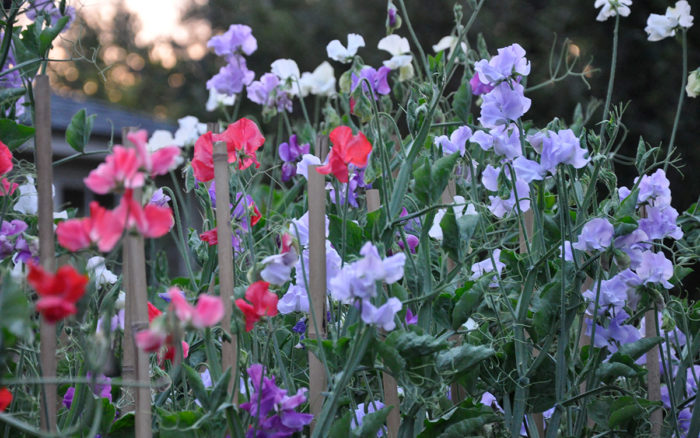
If you haven’t noticed, sweet peas (Lathyrus odoratus, annual) are back in fashion. A century ago, they were the most popular cut flower in North America, but they fell out of fashion once refrigeration and air travel changed the once-local floral industry into a billion-dollar global one. We can thank local flower growers and the emerging slow flower movement for helping a new generation experience how fantastic sweet pea flowers can be.
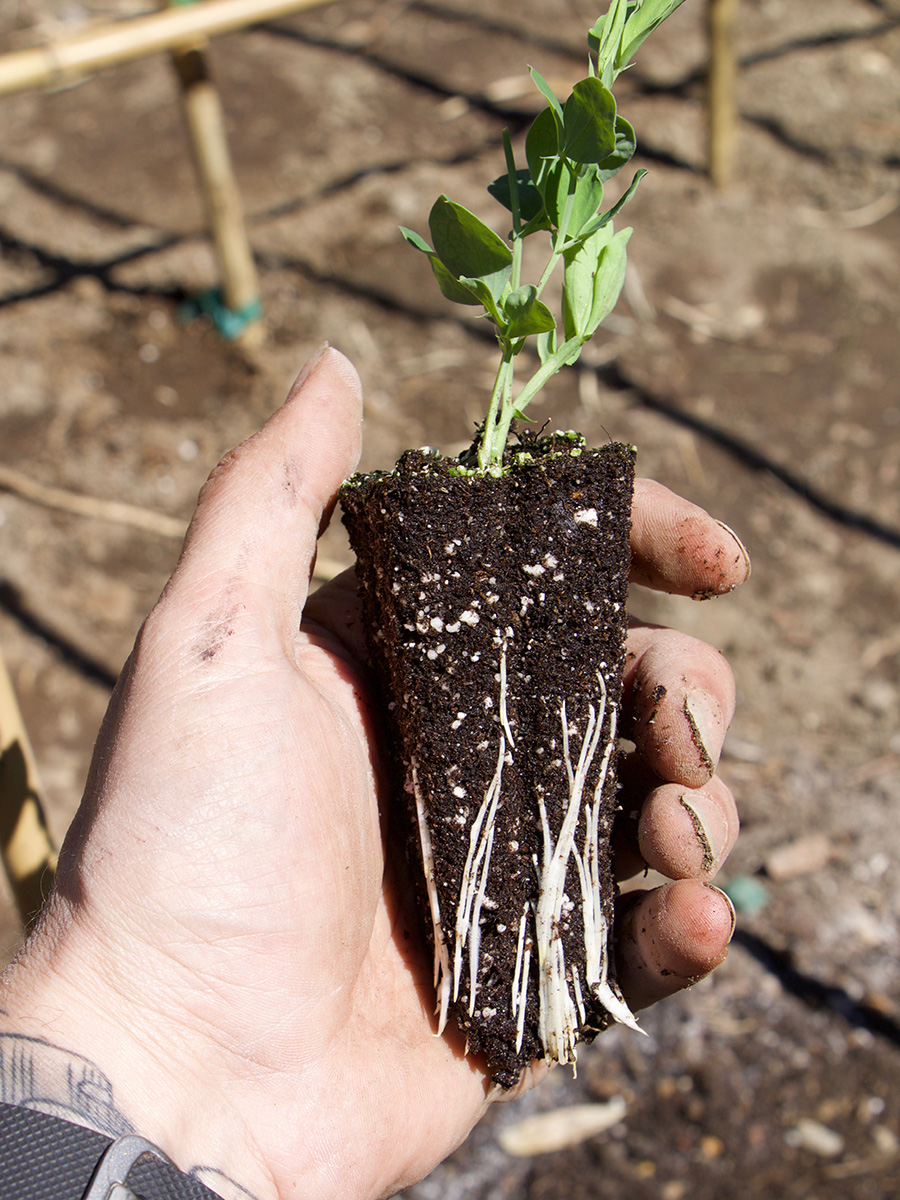
Starting from seed
Most experts now agree that soaking seed is unnecessary, and the common suggestion of using toilet paper tubes to start plants sounds like a good idea, but the results are disappointing, as the tubes fall apart over the long starting time.
Sweet peas produce deep roots (which you will notice when you transplant), so the deepest pots or cells will help maintain good root production while growing indoors. Ideal choices are 6-inch-deep root trainers or 5-inch-deep plug trays.
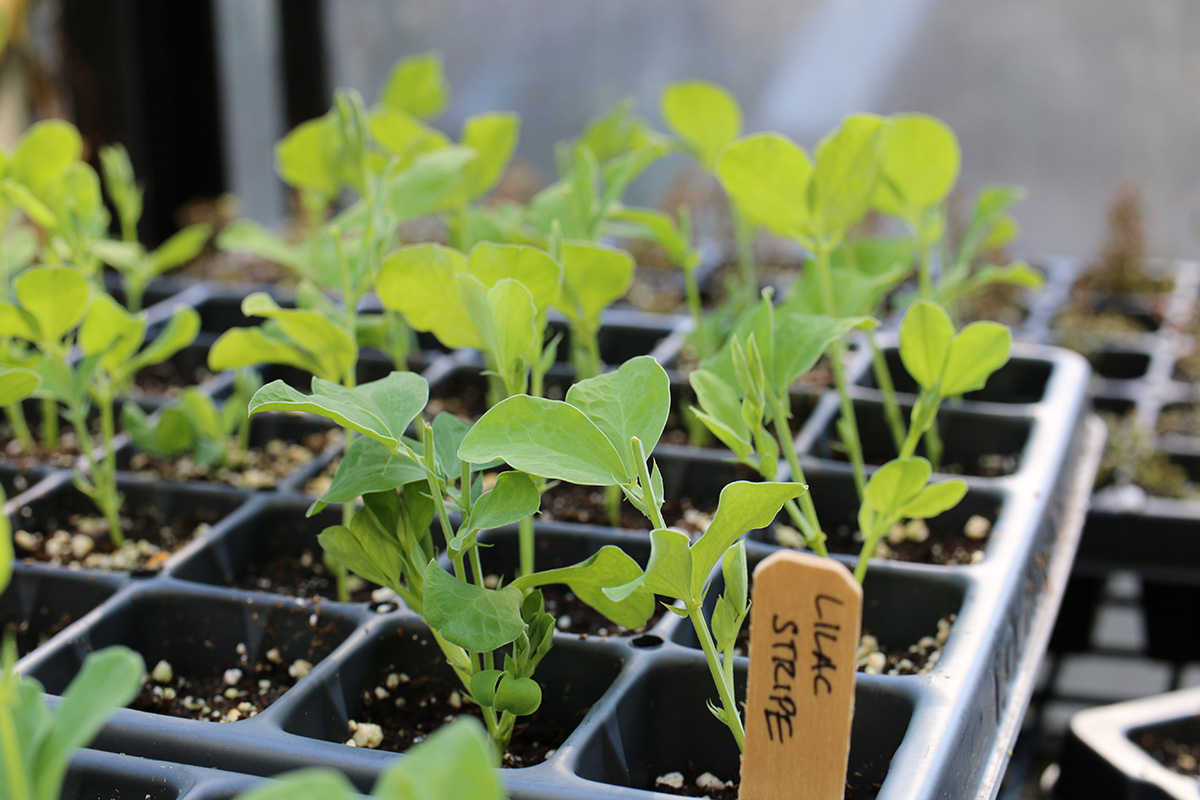
Pinching seedlings just as they start to form their third set of leaves will encourage side shoots, which grow thicker and stronger for cut flower production. This is perhaps the most overlooked yet critical of steps when raising sweet peas. The difference in stem strength once the plants are set into the garden will become evident after a few weeks.
Seed can also be directly sown into the ground as soon as the ground can be worked, usually as early as late winter, but more often in early spring just as one may sow edible peas. These plants may start slowly, but they usually catch up to those that started early, often blooming just a week or so later.
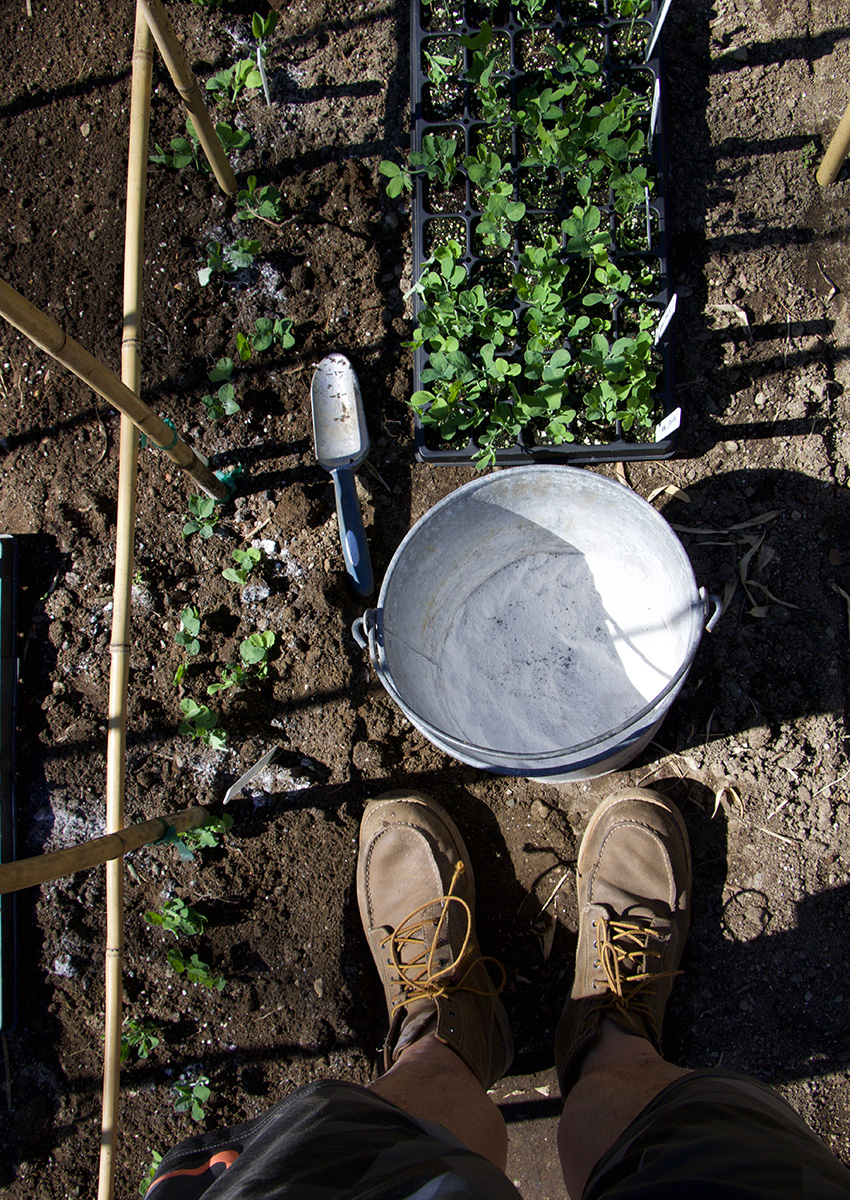
Conditions and care
Sweet peas prefer a sunny site with rich soil. Don’t overthink it, and just dedicate a row in the vegetable garden to them. Keep them well watered, as drought can slow down growth and affect quality.
While cold tolerant, hardened sweet pea seedlings should be planted outside once the maple trees (Acer) begin to blossom, but no sooner. They can handle light frosts but not a hard freeze. Mixing in a bit of ground lime will help raise the pH slightly where soils are acidic. A soil pH closer to 6.5 to 7.0 will help sweet pea plants collect more nutrients from the soil.
Cutting flowers off is the key to maintaining near continual flower production. Deadheading any spent blooms and especially removing seedpods will extend the season. One can quickly become overwhelmed with cut sweet peas by mid-July.
With just a little planning in late winter, gardeners in the Northeast can enjoy sweet peas either as cut flowers indoors or out in the garden from late June through July in Southern New England and until August in Atlantic Canada and in the cooler northern regions.
In our Massachusetts garden, sweet peas begin blooming around the end of June and reach their peak just after the Fourth of July when the weather becomes hot and humid. Our season may end by August first, but further north they can continue all summer if flowers are deadheaded and any seedpods removed.
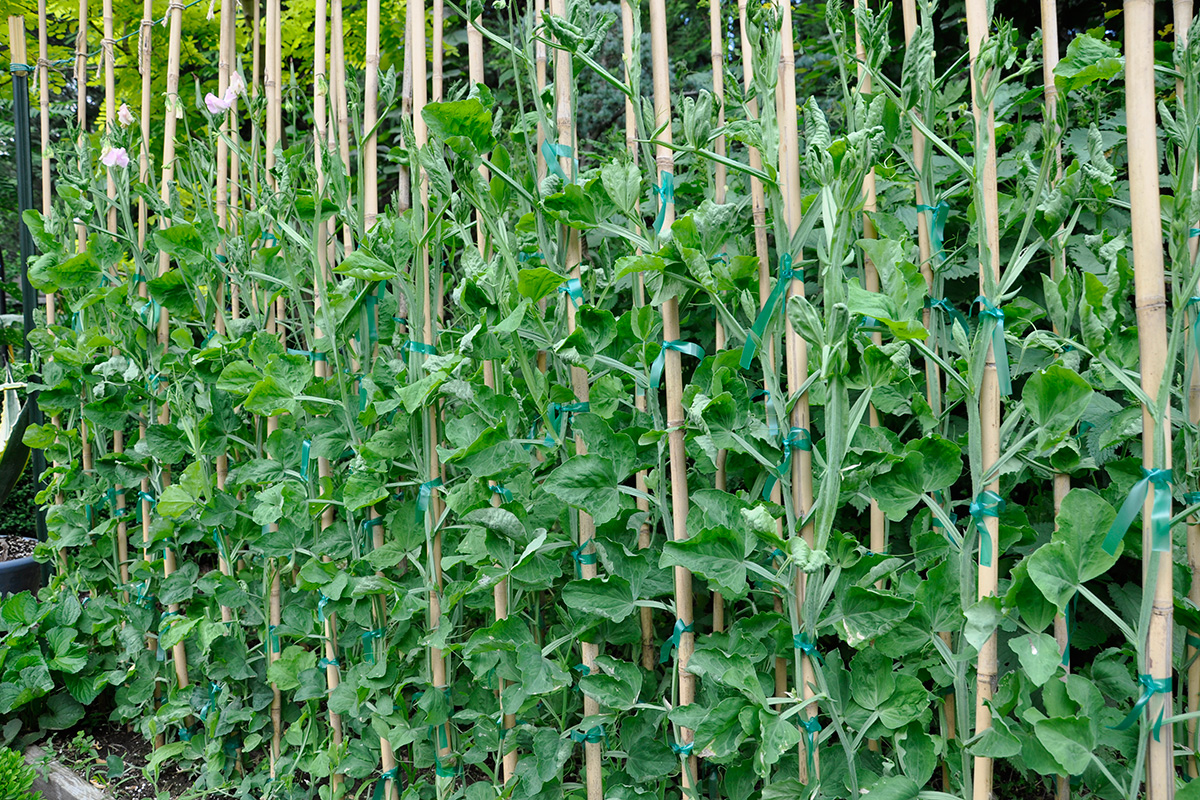
Training methods
As true vines, sweet peas can and need to be able to grow tall (8 feet or more) on a structure, but not every structure will do. The easiest method is to grow them purely as cut flowers in a row on netting attached to sturdy poles in the vegetable garden, but they can add a very English look to a flower border if one trains them to grow on a brush or twig teepee.
Sweet peas should not be left to grow without anything to clamber over. A trellis or wood obelisk can work if the structure is covered with netting. Sweet peas climb not by twining their stems around as pole beans do, but by their thin tendrils grasping on to branches or netting.
Sweet pea growers in England train each plant in a single stem, which is limited to one per bamboo cane (which are called cordons). The reason competitors prefer this method is that it results in producing better flowers—large and evenly set along very long stems. The labor involved in doing this might be too tedious for some gardeners, but I find the job enjoyable. For me, the results outweigh the effort, as some stems can grow 18 inches long with this method and flowers grow the largest compared to other methods I’ve tried.
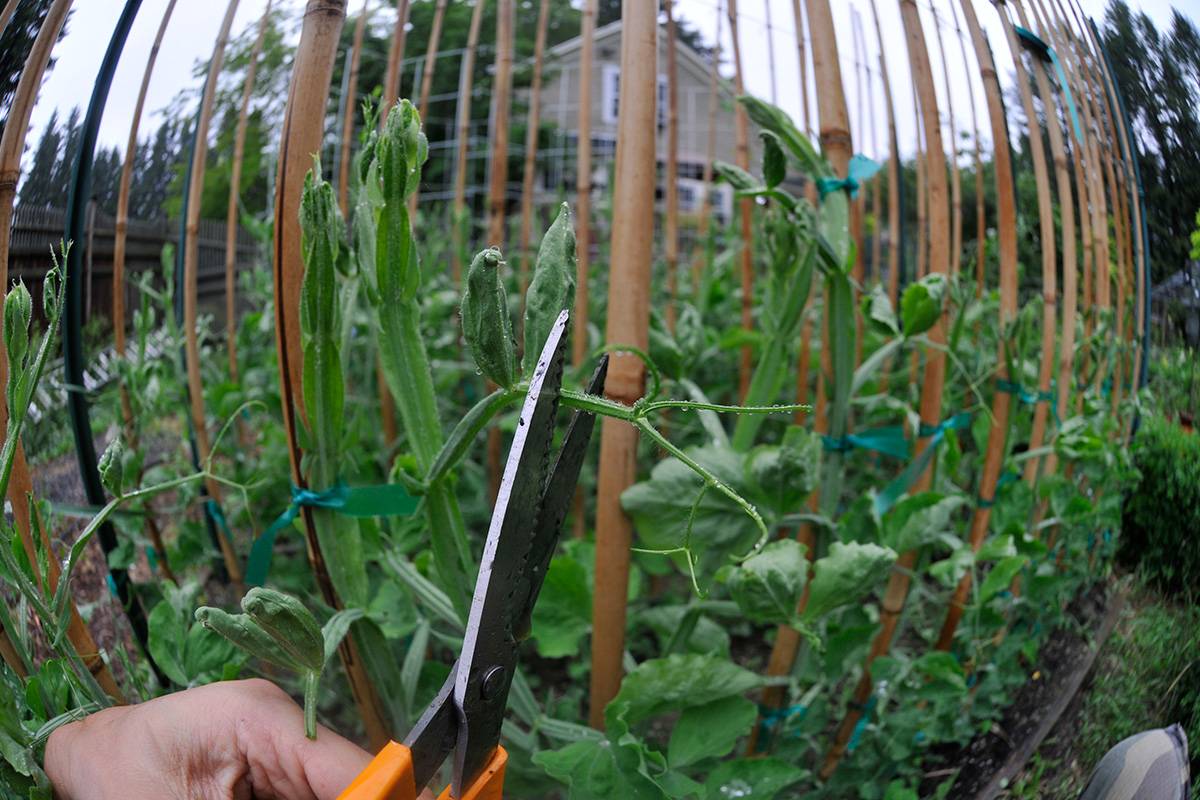
A modified cordon method using 8-foot tall canes or 2×4 planks and then attaching chicken wire or flower netting down the rows allows for more flexibility. The trick here is to trim off as many tendrils as you can and tie stems to the netting, as tendrils will grab onto and wrap around nearby flower buds, thus distorting them.
If training on a twig tower, pruning plants and trimming tendrils isn’t as urgent, as the leaves and tendrils will be significantly smaller. With either cordon method, limiting stems on plants ensures the most abundant flowers, but it requires near daily attention once plants take off in early June. Don’t be tempted to leave many main stems, as this comes at the cost of superior cut flowers. In the border, if plants are growing on a brush or a twig tower, this will be less of a concern, as you will want lots of flowers versus long cut-flower stems.
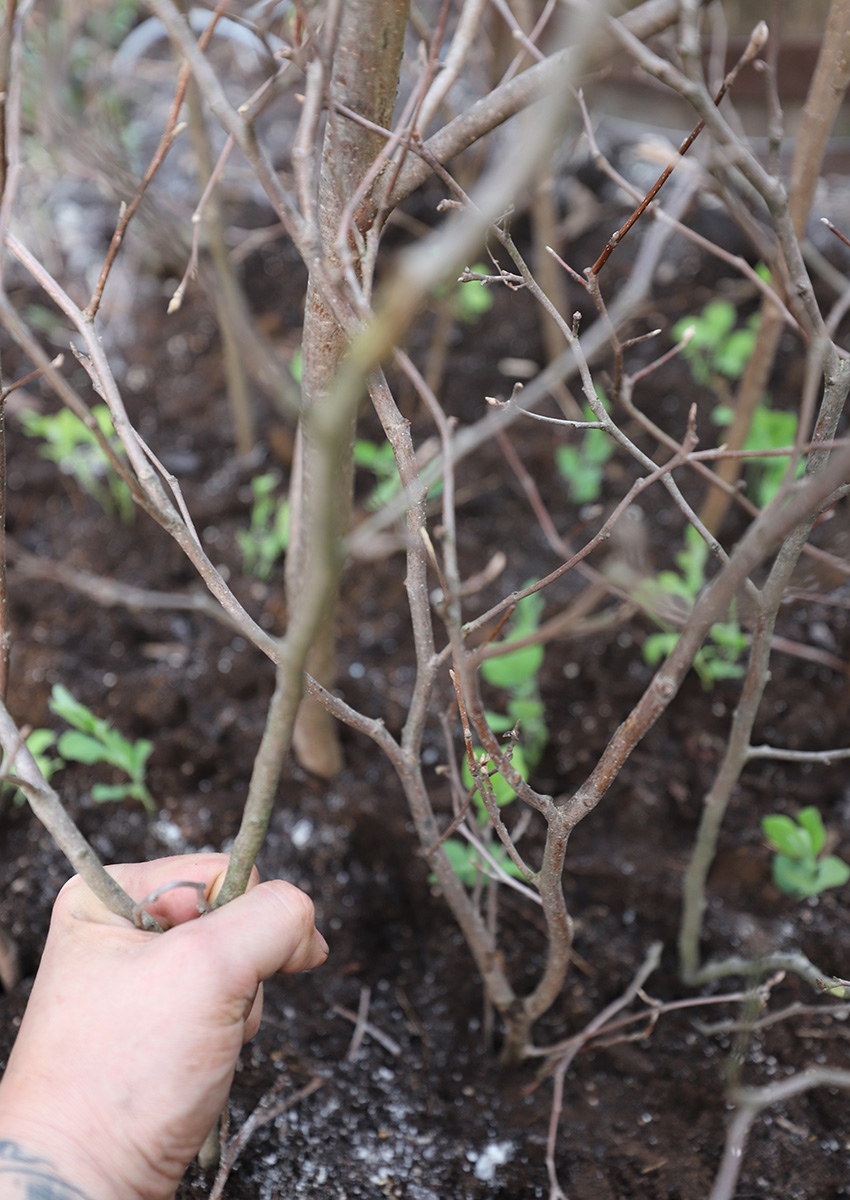
If you are planting in the flower border, a structure such as a twig tower or brush teepee will be more effective. Seedlings or seeds can be set around the base closer together in this case, as more plants will help create a bushier display and have more presence in the garden. It will come at the cost of long flower stems and blossom size, however.
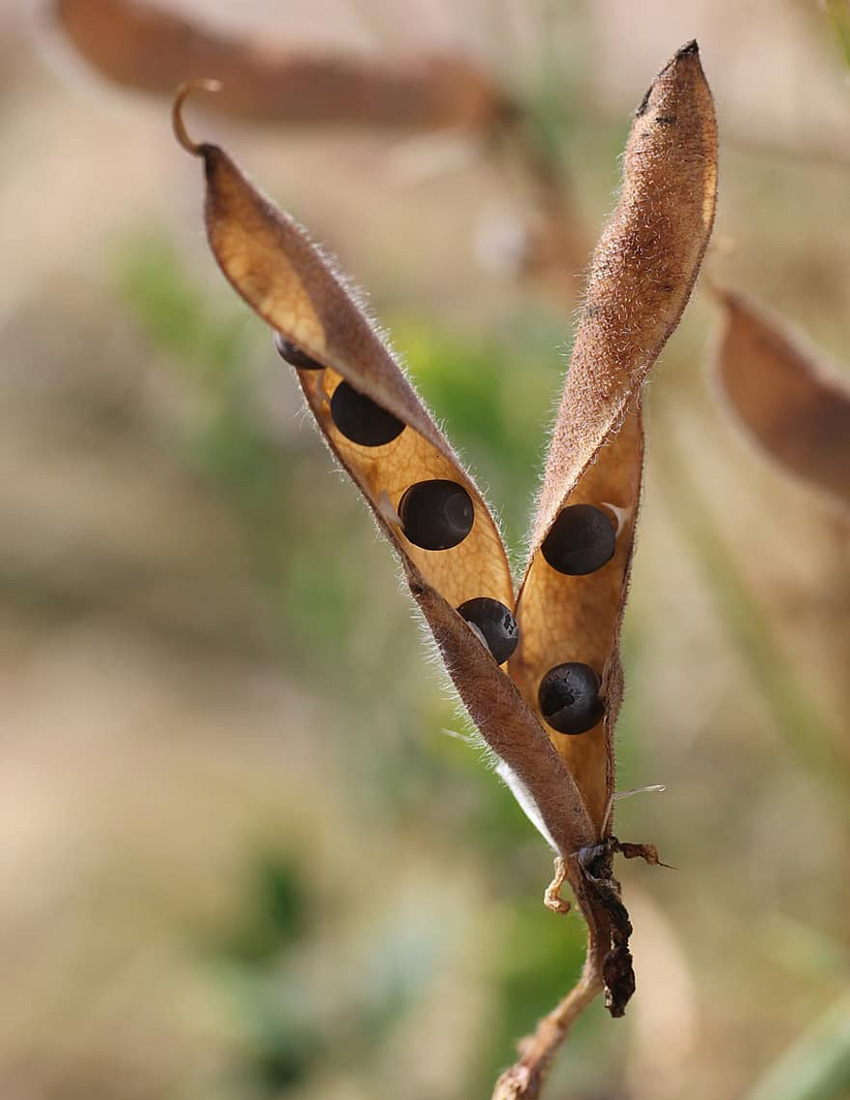
Pest and disease issues
Sweet peas generally have few insect or disease problems. Powdery mildew can begin to attack plants in humid climates, but usually near the end of the season. Don’t panic if the first flower buds yellow and drop off early in the season. This bud drop occurs when night temperatures drop too low, or if the day-to-night differential is still wide, usually in early June. Once night and day temperatures start to moderate, the rest of the flower buds will open.
In the cooler parts of the Northeast such as Atlantic Canada and northern New England, sweet peas may bloom throughout summer with a resurgence in fall, but in most of southern New England, most plants will slow down and stop flower production once the weather becomes hot and humid around late July. One can save any seeds that have formed, as most varieties will come true, but never eat the seeds, as they are considered toxic if consumed in large quantities.
See More:
See Part II: Sweet Pea Varieties
—Matt Mattus is a lifelong gardener and vice president of the Worcester County (Mass.) Horticultural Society. He’s written two books: Mastering the Art of Flower Gardening and Mastering the Art of Vegetable Gardening.



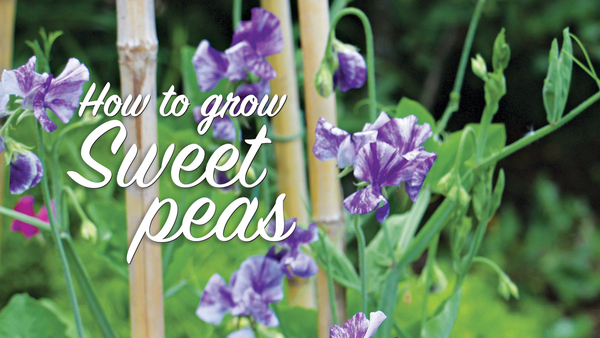

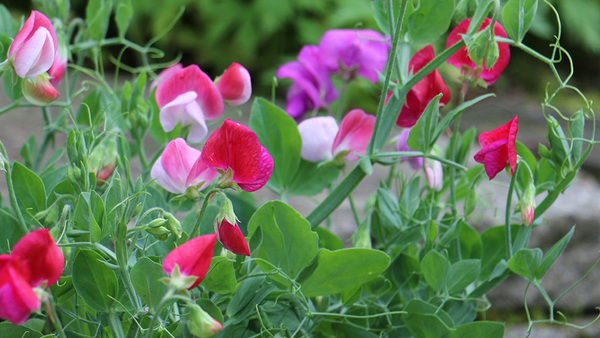












Comments
Log in or create an account to post a comment.
Sign up Log in